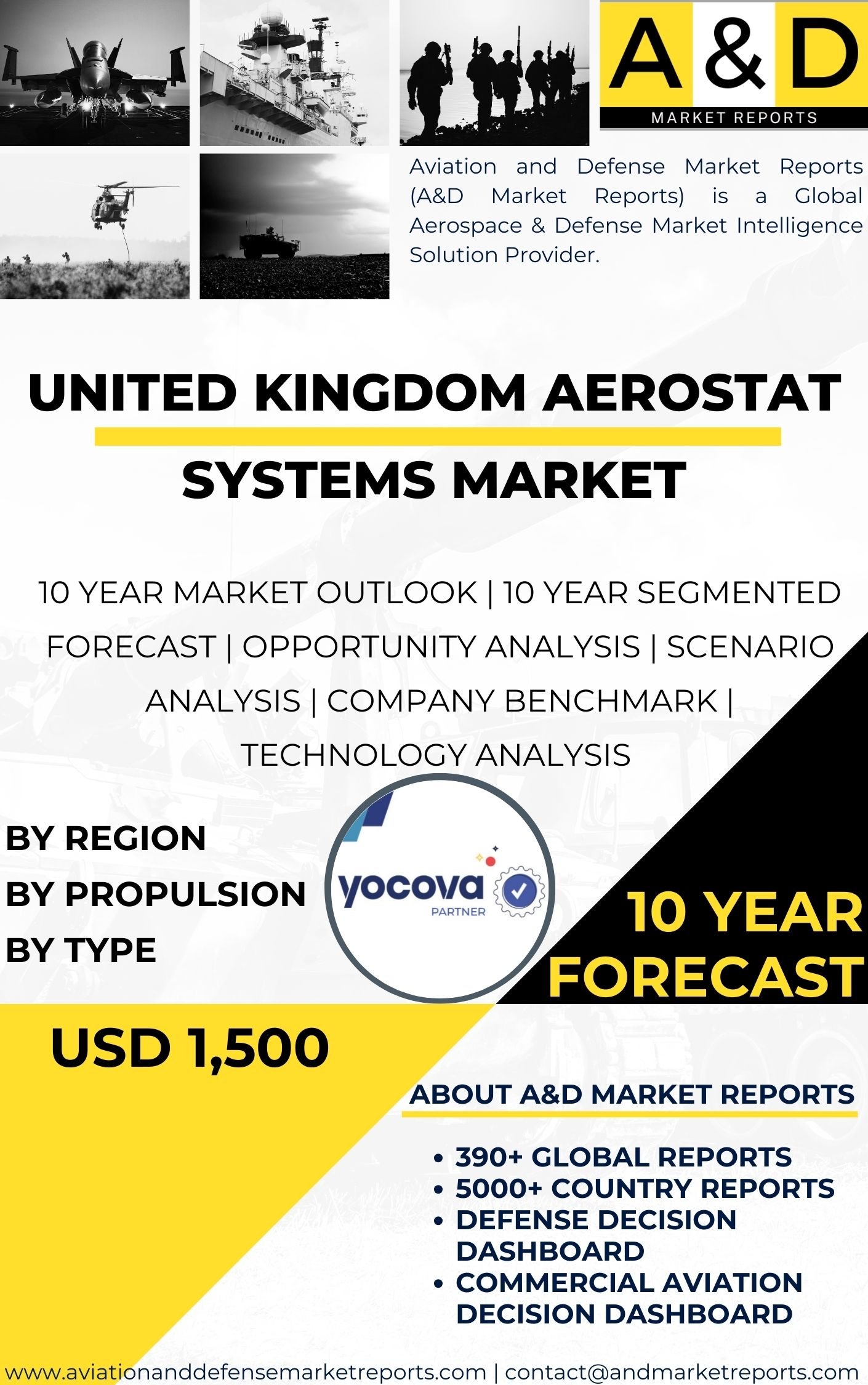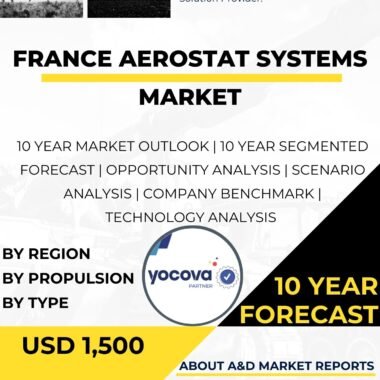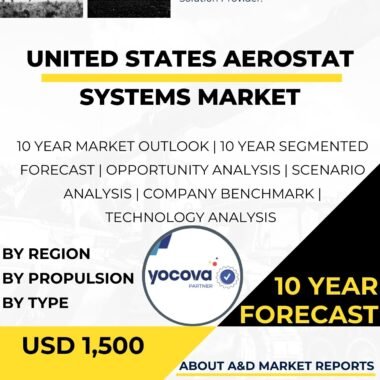Description
United Kingdom Aerostat Systems Market
Aerostat systems, also known as tethered balloons or airships, have been an integral part of the aerospace industry for many years. These unmanned, lighter-than-air vehicles have found applications in various sectors, including defense, surveillance, telecommunications, and research. In the United Kingdom, the aerostat systems market has witnessed steady growth and holds promise for continued expansion. This article provides an overview of the current status of the United Kingdom aerostat systems market, highlighting its applications, key players, challenges, and growth prospects.
Aerostat systems operate on a simple yet effective principle: they use buoyant gases, such as helium, to lift a large balloon-like structure into the sky. Tethered to the ground with strong cables, aerostats remain aloft for extended periods, providing a stable platform for various payloads and instruments. The UK’s interest in aerostat technology is driven by its versatility and cost-effectiveness in meeting diverse operational needs.
In the defense sector, aerostat systems play a crucial role in surveillance and reconnaissance missions. Equipped with advanced sensors and cameras, these platforms offer persistent, high-altitude surveillance capabilities, enabling military forces to monitor vast areas for extended periods. Aerostats are particularly useful in border security, coastal surveillance, and counterterrorism operations.
The UK’s defense establishment recognizes the value of aerostat systems in enhancing situational awareness and intelligence gathering. By deploying aerostats over remote or challenging terrains, military forces gain a valuable edge in monitoring adversary movements and detecting potential threats.
Additionally, aerostat systems serve as effective communication relays in remote or disaster-stricken areas. By carrying communication payloads, these platforms provide temporary connectivity solutions for emergency response teams and humanitarian missions, facilitating coordination and information exchange.
In recent years, the UK’s aerostat systems market has seen contributions from both domestic companies and international players. The country’s strong research and development capabilities have led to the creation of advanced aerostat technologies that cater to specific defense and civilian needs. Collaborations between UK-based firms and foreign entities have also facilitated technology transfer and knowledge exchange, driving innovation and market growth.
Challenges in the UK aerostat systems market are diverse and multifaceted. The first major obstacle is the weather dependence of aerostats. Wind conditions and inclement weather can limit the deployment and operation of these platforms, affecting their availability and reliability. Advanced weather prediction systems and robust ground infrastructure can help mitigate these challenges to some extent.
Security concerns are another critical issue. As aerostat systems may be used for surveillance and intelligence gathering, the risk of unauthorized access or data breaches must be addressed. Implementing encryption, secure communication protocols, and physical security measures is essential to protect sensitive information.
Furthermore, the high initial costs of aerostat systems can deter potential buyers. While aerostats offer cost-effective solutions in the long term due to their ability to remain airborne for extended periods without the need for constant fueling, the upfront investment can be a significant barrier. Governments and private operators need to carefully assess the long-term benefits to justify the initial expenses.
Regulatory challenges also play a role in the UK aerostat systems market. The operation of unmanned aerial vehicles (UAVs) is subject to various regulations, including airspace restrictions, licensing requirements, and safety standards. Aligning aerostat operations with existing regulations while ensuring continued innovation and operational flexibility can be a delicate balancing act.
Despite these challenges, the future prospects of the UK aerostat systems market remain promising. The global trend of increased defense spending and the growing demand for border security and surveillance solutions create a conducive environment for market growth. Advancements in materials science, aerodynamics, and sensor technologies will likely drive the development of more efficient and capable aerostat systems.
As the technology matures, costs are expected to decrease, making aerostat systems more accessible to a broader range of users, including smaller defense agencies and private enterprises. The ability of aerostats to serve as cost-effective, long-endurance surveillance platforms positions them as attractive alternatives to traditional aerial vehicles in various applications.
International collaborations will continue to play a vital role in shaping the UK aerostat systems market. Joint development programs and technology transfer initiatives with allied nations contribute to a more comprehensive and competitive aerostat ecosystem.
In conclusion, the United Kingdom’s aerostat systems market holds promise for sustained growth, driven by the technology’s versatility and cost-effectiveness. Defense and surveillance applications, as well as disaster response and communications, offer significant opportunities for aerostat deployment. Overcoming challenges related to weather dependence, security, cost, and regulations will be critical for unlocking the full potential of aerostat systems in the UK and positioning the country as a leader in this innovative aerospace domain.




